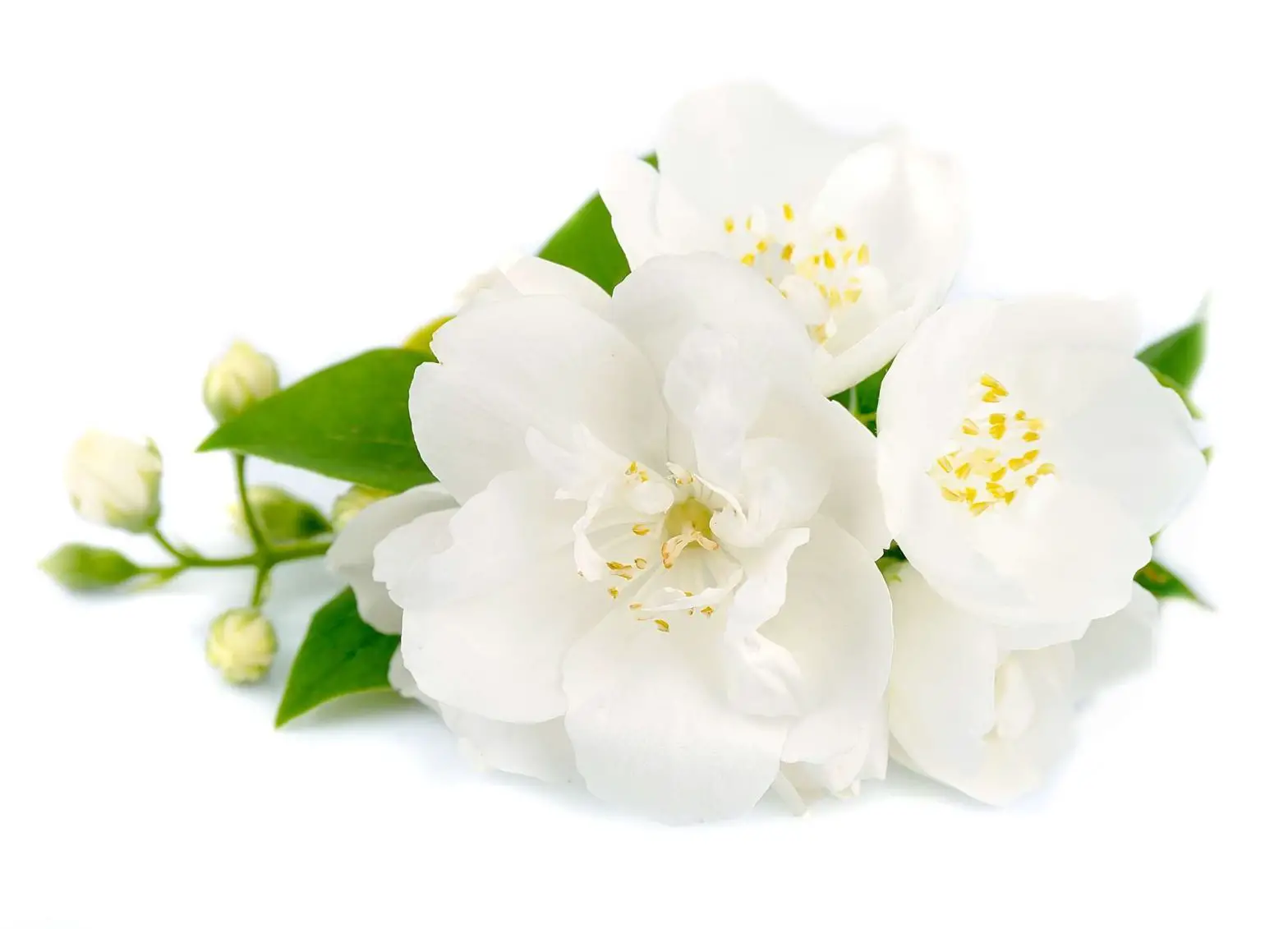Jasmine (pronounced jaz·muhn) is a perfume ingredient and fragrance note that’s highly cherished by perfumeries. It adds an enchantingly complex floral note to perfumes.
Jasmine has a sweetened white-floral scent that many would describe as deluxe, indulgent, and intoxicating. Thanks to its musky character, it can add a profound and playful je ne sais quoi to scents.
The smell of jasmine is so captivating that one study found it to be a mood enhancer as good as valium:
“The fragrances generated a calming effect,” Science Daily reports, “in a Plexiglas cage whose air contained a high concentration of the fragrance, the mice ceased all activity and sat quietly in the corner.”
With the Latin name of Jasminum, jasmine is a genus of well over 200 shrubs and vines that belong to the olive family. Jasmines originated from the Himalayan mountains and the moderate regions of East China and were brought to the Middle East through trade routes.
The sheer diversity of the Jasminum genus is the main reason why jasmine, as a perfume ingredient, can come out smelling so different depending on where it’s grown. Some jasmines have a greener, floral scent. Others smell sweeter, almost candied. On some occasions, they can even give off a musty, narcotic, medicinal aroma.
The strange smell of jasmine comes from the fact that it contains indole, an organic compound with a potent, overpowering aroma. To some, indole smells animalic, almost resembling feces. To others, it brings back the memory of the heavy smell of mothballs in grandma’s wardrobe.
What molecules the scent of jasmine is sourced from—and how well it’s incorporated with the rest of the ingredients of a formulation—is telling of the mastery (or lack of) of the perfumer at hand.
Done right, it elevates a perfume to the next level of sophistication. Done wrong, and it ruins it with an aggressively dank ring to it.
Since Persian merchants introduced jasmines to Europe (Persia was an ancient empire on the territory of modern-day Iran), the opulent scent of their blooming flowers has captured the minds and hearts of alchemists and perfumers throughout the centuries.
Jasmine is, in fact, one of the most common building blocks of modern-day perfumes. There’s barely a formulation that doesn’t feature the scent of jasmine or its construction in one form or another.
The jasmine flower derives its name from the word yâsamin in Persian (Fārsi), meaning “god’s gift.”
Jasmine pairs well with sweet and honeyed scents like orange, blood orange, and tangerine (less so with the green sourness of lime, lemon, and bergamot). It adds class to tuberose and honeysuckle and serves as a sexy pairing for ylang-ylang. Other blends include frankincense, sandalwood.
Some of the most common substitutes for jasmine scent are lavender, chamomile, bergamot, and cedarwood.

